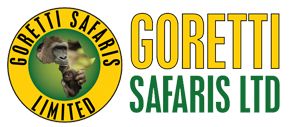This is a unique day trip that has three special elements to give guests and residents a little glance into the natural beauty of Uganda.
MPANGA FOREST:
Situated about 35 kilometers west of Kampala, Mpanga Forest is a natural evergreen tropical forest. The forest is an eco-tourism spot under the management and conservation of the National Forestry Authority. The forest consists of tree species like the Celtis Family species characterized with large buttress and the Ficus Family as well as the phenomenal Mahogany Trees.
Mpanga Forest is a birding hotspot with species like Weaver birds, Owls, Grey Parrots, black and white casqued hornbills and cuckoos among others.
The forest is home to red-tailed monkeys and bush-babies.
UGANDA EQUATOR
Uganda is among the 13 countries crossed by the Imaginary Line known as the Equator. It’s a great experience to stand in the middle of the planet for a photo-opportunity.
A local guide does a demonstration about the wonders of the Equator where flowing water spins clockwise or anticlockwise if you are a few degrees north or south of the Equator. Water flows without spinning at all if one pours water at the equator.
There are also coffee shops and craft outlets for those intending to buy curio items.
MABAMBA BAY
Mabamba refers to “a place of Lung Fish” in the indigenous language (Luganda). Declared a Ramsar Site in 2007, Mabamba Bay is a birding spot that stretches to L. Victoria.
It is one of the best places to see the rare Shoebill Stork! Among the 300 bird species recorded in Mabamba are Blue Swallow, White-winged Tern, Gull-billed Tern in the migratory category.
Papyrus endemics include Papyrus Gonolet, Papyrus Yellow Warbler among others. The Marshy Swamp is also a haven to spur-winged geese, yellow-billed ducks, and malachite kingfishers, African Jacana, Purple Heron and Squacco Heron among others.
We employ a motorized Canoe and navigate the narrow waterways in the swamp for a birding vantage point.
This is a unique day trip that has three special elements to give guests and residents a little glance into the natural beauty of Uganda.



